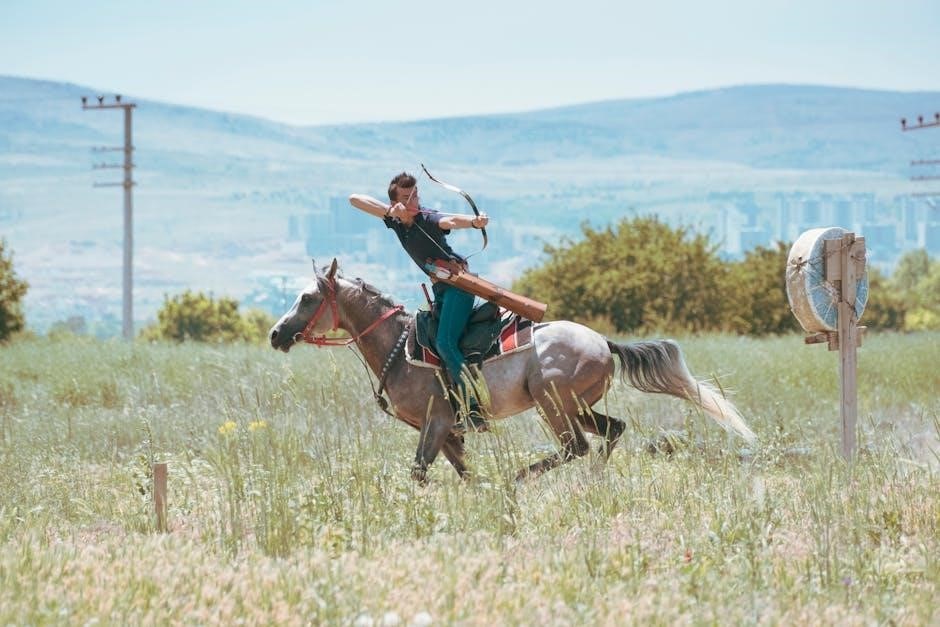The Fighter is a versatile and iconic class in D&D 5e, excelling in combat with robust features like Fighting Style, Second Wind, and Action Surge. Whether focusing on martial prowess or magical abilities, Fighters adapt to any role, making them a cornerstone of every adventuring party. Their flexibility and durability ensure they remain a popular choice for both new and experienced players.
1.1 Overview of the Fighter Class
The Fighter is a versatile and enduring class in D&D 5e, known for its adaptability and martial prowess. With core features like Fighting Style, Second Wind, and Action Surge, Fighters excel in combat, offering both offense and utility. They can specialize through subclasses like Champion, Battle Master, or Eldritch Knight, catering to diverse playstyles. Whether focusing on brute strength, tactical precision, or magical combat, the Fighter remains a cornerstone of any adventuring party, providing reliability and flexibility in equal measure.
1.2 Role of the Fighter in a Party
Fighters are often the backbone of a party, providing consistent damage, tanking capabilities, and tactical control. Their versatility allows them to fill roles such as frontline defender, damage dealer, or even battlefield commander. With abilities like Second Wind and Action Surge, Fighters can adapt to shifting combat dynamics, making them invaluable in both offense and defense. Their Martial Archetype further specialize their role, ensuring they can cater to the party’s needs, whether through raw power, strategic finesse, or inspirational leadership.
1.3 Why Play a Fighter?
The Fighter is a timeless choice for players seeking versatility and power; With access to potent features like Fighting Style, Second Wind, and Action Surge, Fighters excel in combat. Their Martial Archetype allows for deep specialization, catering to diverse playstyles. Whether you prefer dealing massive damage, tanking hits, or controlling the battlefield, the Fighter’s adaptability ensures they fit seamlessly into any party. Their straightforward yet robust design makes them ideal for both newcomers and seasoned players looking to dominate encounters with precision and flair.

Core Class Features of the Fighter
Fighters gain iconic abilities like Fighting Style, Second Wind, Action Surge, and Martial Archetype, providing versatility in combat. These features enhance durability, offensive prowess, and tactical flexibility, making Fighters formidable in any scenario.
2.1 Fighting Style
Fighting Style is a core feature available at level 1, allowing Fighters to specialize in specific combat techniques. Options include Archery for ranged attacks, Defense to boost AC, or Great Weapon Fighting for increased damage. Each style enhances the Fighter’s effectiveness in their chosen combat approach, providing a unique playstyle. This flexibility ensures Fighters can adapt to various roles within a party, making them versatile and valuable in any adventuring group. The choice defines their early-game effectiveness and combat identity.
2.2 Second Wind
Second Wind is a defining feature of the Fighter class, available at level 1. It allows the Fighter to regain hit points by expending a bonus action, providing a crucial survival tool in combat. This ability can be used once per short or long rest, making it a strategic resource for managing health during intense encounters. Second Wind enhances the Fighter’s durability, enabling them to stay in the fight longer and protect their allies. It’s a key element in their role as a party’s frontline defender or damage dealer.
2.3 Action Surge
Action Surge is a powerful ability gained by Fighters at level 2, allowing them to take an additional action on their turn. This can be used to make attacks, cast spells, or utilize other abilities, significantly increasing versatility in combat. It can be used once per short or long rest, with additional uses gained at higher levels. Action Surge is a game-changer in critical moments, enabling Fighters to deliver devastating attacks, escape danger, or perform complex maneuvers, making them even more formidable on the battlefield.
2.4 Martial Archetype
The Martial Archetype is a defining feature of the Fighter class, chosen at level 3. It provides a unique set of abilities that shape the Fighter’s combat style and role in the party. Archetypes like Champion, Battle Master, or Eldritch Knight offer distinct playstyles, from superior critical hits to tactical combat maneuvers. This customization allows Fighters to excel in specific roles, making them versatile and adaptable to any adventuring group’s needs while maintaining a strong martial foundation.
2.5 Ability Score Improvement
Ability Score Improvement (ASI) allows Fighters to enhance their abilities at levels 4, 8, 12, 16, and 19. At each of these levels, a Fighter can increase one ability score by 2 or two scores by 1. This feature is crucial for optimization, enabling Fighters to maximize their primary combat stats or address weaknesses. For example, a Strength-based Fighter might prioritize boosting Strength for better attacks, while a Dexterity Fighter could focus on improving AC. ASIs provide flexibility, ensuring Fighters remain versatile and powerful as they progress.
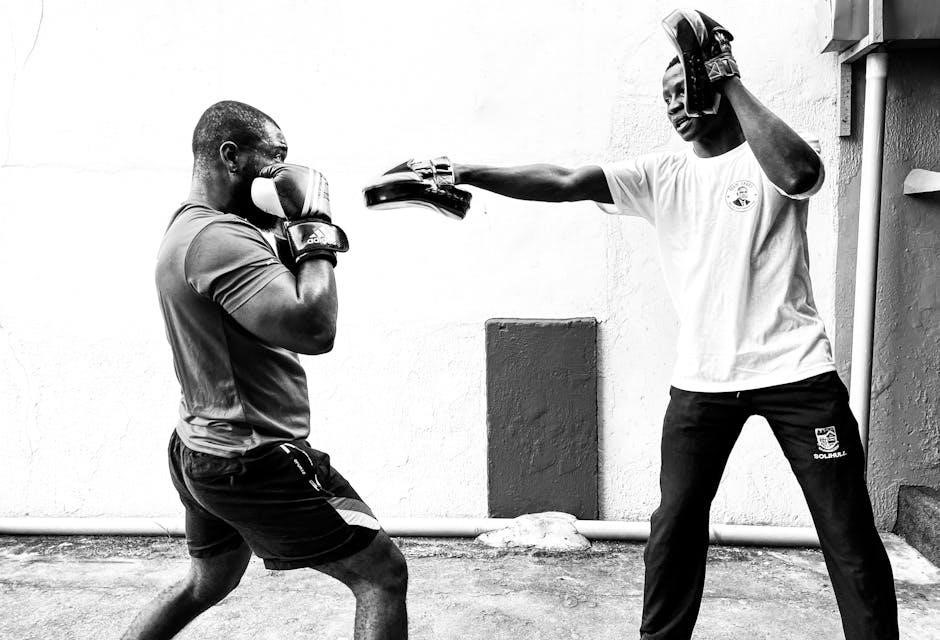
Subclass Archetypes
Fighter subclasses offer unique playstyles: Champion for unmatched resilience, Battle Master for tactical superiority, Eldritch Knight for arcane combat, and Purple Dragon Knight for leadership and flair.
3.1 Champion
The Champion archetype embodies resilience and versatility, excelling in both offense and defense. At level 3, Improved Critical increases critical hit chance, while Extra Attack at level 5 enhances combat effectiveness. Survivor’s Reflexes at level 9 grants advantage on Dexterity saving throws, and Supreme Champion at level 17 allows for healing or attacking in critical situations. This subclass is ideal for players seeking a durable, adaptable fighter who thrives in any combat scenario.
3.2 Battle Master
The Battle Master archetype excels at controlling the battlefield through superior tactics and precision. Gaining access to combat maneuvers and superiority dice at level 3, this fighter uses techniques like Disarm, Feint, and Menacing Attack to outmaneuver foes. As they progress, their number of superiority dice increases, allowing for more complex strategies. The Battle Master’s ability to direct allies with their bonus action enhances the party’s combat effectiveness, making them a valuable tactical asset in any adventuring party.
3.3 Eldritch Knight
The Eldritch Knight combines martial prowess with arcane magic, blending the Fighter’s combat skills with spellcasting. Gaining access to spells at level 3, they learn from the Wizard spell list, with their spellcasting ability tied to Intelligence. Key features include Weapon Bond and Spellcasting, allowing them to infuse magic into their attacks. By level 10, they gain Improved War Magic, enabling spellcasting during the same turn as weapon attacks. This subclass is perfect for players who enjoy blending magic and martial tactics in creative ways.
3.4 Purple Dragon Knight
The Purple Dragon Knight is a Fighter subclass from the Sword Coast Adventurer’s Guide, focusing on leadership and inspiring allies. They gain the Rallying Cry feature at level 7, allowing them to grant temporary hit points to themselves and allies. At level 18, Improved War Magic lets them cast spells using a bonus action. This archetype excels at supporting the party and maintaining battlefield control, making them ideal for players who enjoy a mix of combat and leadership roles.
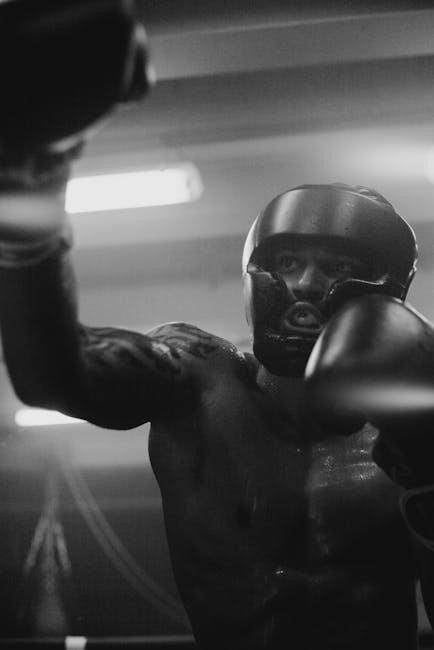
Combat Tactics and Strategies
Fighters excel in combat by mastering positioning, optimizing ability usage, and coordinating with allies to control the battlefield effectively, ensuring victory through strategic decisions and adaptability.
4.1 Mastering the Action Economy
Mastering the action economy is crucial for fighters, as it determines their effectiveness in combat. Fighters must prioritize actions like attacking, using abilities, or repositioning. Understanding when to use Bonus Actions or Reactions can significantly enhance versatility. Coordinating with allies to set up attacks or control enemies ensures optimal use of turns. Properly managing resources like Second Wind and Action Surge is vital for sustaining combat effectiveness. Practice and familiarity with combat mechanics are key to executing strategies seamlessly.
4.2 Effective Use of Second Wind
Second Wind is a powerful tool for fighters, allowing them to recover hit points during combat. Use it strategically, such as when you’re low on health and need to stay in the fight or to avoid burning limited resources like healing potions. Timing is key—activate Second Wind during a lull in attacks or before taking significant damage. Remember, it can be used once per short or long rest, so ration it wisely to maximize its effectiveness in critical moments.
4.3 Fighting Style Synergies
Fighting styles can be combined with other class features and feats to create powerful synergies. For example, archery style pairs well with Sharpshooter for maximum ranged damage, while Defense complements high Dexterity builds. Battle Master maneuvers enhance styles like Precision Attack, adding versatility. Experiment with combinations to optimize your fighter’s combat effectiveness, ensuring your chosen style aligns with your build and playstyle for maximum impact in every encounter.
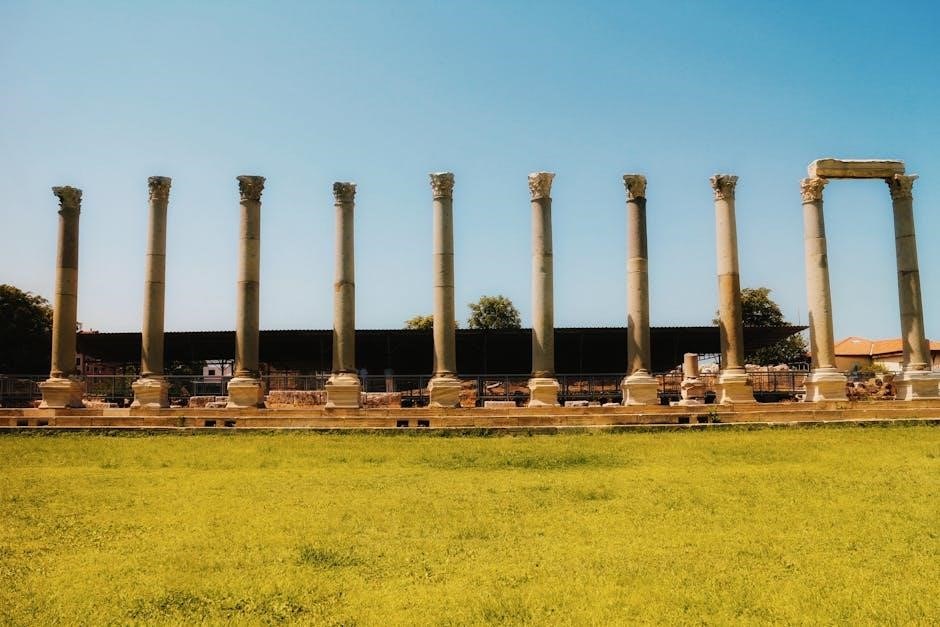
Ability Score Prioritization
Fighters prioritize Strength or Dexterity for combat effectiveness, followed by Constitution for survivability. Wisdom, Intelligence, and Charisma are secondary, depending on subclass and role-playing needs.
5.1 Strength vs. Dexterity
Fighters must choose between Strength and Dexterity as their primary ability. Strength excels in melee combat, maximizing damage with weapons like greataxes. Dexterity prioritizes mobility, attack precision, and AC, ideal for ranged or agile builds. Choose Strength for brute power or Dexterity for finesse and evasion, tailoring your selection to your preferred playstyle and weapon of choice.
5.2 Importance of Constitution
Constitution is vital for Fighters, as it directly impacts hit points and survivability. A high Constitution increases stamina, allowing Fighters to endure prolonged combat and withstand heavy damage. It also improves concentration for spells or abilities, particularly for Eldritch Knights. Even for non-spellcasting Fighters, Constitution enhances durability, making it a cornerstone for any build. Prioritizing Constitution ensures resilience, keeping Fighters in the fight longer and making them more reliable in tough encounters.
5.3 Wisdom and Intelligence for Eldritch Knights
For Eldritch Knights, Wisdom and Intelligence are crucial, as they determine spellcasting ability and effectiveness. Wisdom enhances spell attack bonus and damage, while Intelligence improves spellcasting capability and access to higher-level spells. A high Intelligence score is particularly important, as it directly impacts the Eldritch Knight’s arcane abilities. While Strength remains relevant for martial combat, investing in Intelligence ensures magical versatility and potency, making it a key focus for this subclass.
5.4 Charisma for Purple Dragon Knights
Charisma is vital for Purple Dragon Knights, as it powers their martial and leadership abilities. A high Charisma score enhances spell attacks, damage, and saving throws for their Banneret feature. While Strength remains important for melee combat, Charisma is key for their unique magical and inspirational capabilities. Investing in Charisma ensures better crowd control, ally support, and overall versatility, making it a priority for this subclass to maximize their impact both in and out of combat.

Feat Selection and Optimization
Fighters gain feats at level 4, enhancing abilities. Choose feats that boost combat effectiveness or address weaknesses. Consider balancing offensive power with utility for versatility.
6.1 Essential Feats for Fighters
Essential feats for fighters include Sharpshooter, Great Weapon Master, and Polearm Master, which enhance attack effectiveness and damage output. Sharpshooter boosts ranged attacks, while Great Weapon Master excels in melee. Polearm Master offers versatility with reach weapons. For survivability, Sentinel provides defensive utility, and Tireless Spirit enhances stamina. These feats complement the fighter’s martial prowess, making them formidable in combat. Choose based on playstyle and party needs for optimal synergy.
6.2 Feat vs. Ability Score Improvement
Choosing between feats and ability score improvements (ASIs) depends on your fighter’s build. ASIs enhance core abilities, boosting skills, saves, or combat effectiveness, while feats provide unique, versatile abilities. Early on, ASIs are often crucial for foundational strength, but feats like Sharpshooter or Great Weapon Master can offer game-changing combat advantages. Balance both to create a well-rounded, powerful fighter.
6.3 Build-Specific Feats
Build-specific feats enhance your fighter’s unique playstyle. For archers, Sharpshooter and Alert are staples, while melee fighters benefit from GWM and Polearm Master. Eldritch Knights excel with War Caster and Tough, while Purple Dragon Knights can use Inspiring Leader or Linguist. Champions shine with Unarmored Defense or Resilient. Tailor your feat choices to your subclass and playstyle for maximum effectiveness.

Role-Playing a Fighter
Fighters embody courage, discipline, and martial prowess. Your character’s background and personality shape their motivations and interactions. Whether a noble knight or a ruthless mercenary, their story unfolds through bold actions and unwavering resolve in combat and camaraderie.
7.1 Background and Personality
A fighter’s background and personality define their identity. They might be a disciplined soldier, a chivalrous knight, or a grizzled mercenary. Personality traits could include unwavering loyalty, a stern demeanor, or a mysterious past. Their backstory often shapes their motivations, whether seeking redemption, glory, or protecting others. Role-playing a fighter involves embodying these traits, creating depth through interactions and decisions that reflect their values and experiences. This adds richness to the character, making them more than just a combat specialist.
7.2 Fighter Archetypes and Roleplay
Fighter archetypes like the Champion, Battle Master, Eldritch Knight, and Purple Dragon Knight offer distinct roleplay opportunities. Champions embody martial perfection, often displaying confidence or arrogance. Battle Masters thrive as tacticians, using their intellect to outmaneuver foes. Eldritch Knights blend magic and combat, creating intriguing scholarly or mysterious personas. Purple Dragon Knights focus on leadership and honor, making them natural protectors or charismatic figures. These archetypes allow players to craft unique identities tied to their combat style and background.
7.3 Interacting with Other Party Members
Fighters often serve as the party’s backbone, enabling teamwork and coordination. They protect squishy allies like wizards and rogues, creating opportunities for them to shine. Collaborating with clerics or bards enhances their defensive and offensive capabilities. Fighters can also take the lead in combat, directing strategies and inspiring confidence. Their interactions foster unity, making them crucial for party synergy and success in challenging encounters.
Equipment and Gear
Fighters rely on weapons and armor as their primary equipment, with choices like swords, axes, and plate mail enhancing their versatility and combat effectiveness significantly.
8.1 Weapon Choices
Fighters excel with a variety of weapons, from versatile longswords to powerful greatswords or precise rapiers. Strength-based fighters often favor heavy weapons like greataxes or mauls, while Dexterity-focused fighters lean toward lighter options like short swords or daggers. Ranged weapons, such as longbows or crossbows, provide versatility in combat. The choice of weapon depends on the fighter’s build, emphasizing either brute force, agility, or ranged prowess. Versatile weapons like the longsword allow for adaptability in different combat scenarios.
8.2 Armor and Defense
Fighters rely heavily on armor for survival, with proficiency in light, medium, and heavy armor. Their defense is rooted in high Armor Class (AC), which can be bolstered by shields. Strength-based fighters often favor heavier armor for superior protection, while Dexterity-focused fighters may opt for lighter armor to maintain mobility. The right armor choice balances survivability and flexibility, ensuring the fighter remains durable while adapting to combat demands. Proper armor selection is crucial for maximizing defensive capabilities in any build.
8.3 Adventuring Gear
Fighters often carry practical gear for survival and combat situations. Essentials like torches, rope, rations, and bedrolls ensure preparedness. Tools like a crowbar or hammer can aid in overcoming obstacles. The Explorer’s Pack is a popular choice, offering a versatile assortment of items. While not as flashy as weapons or armor, the right adventuring gear enhances a fighter’s ability to handle unexpected challenges, making them more self-sufficient and adaptable during quests. This practical approach ensures they’re ready for anything beyond the battlefield.
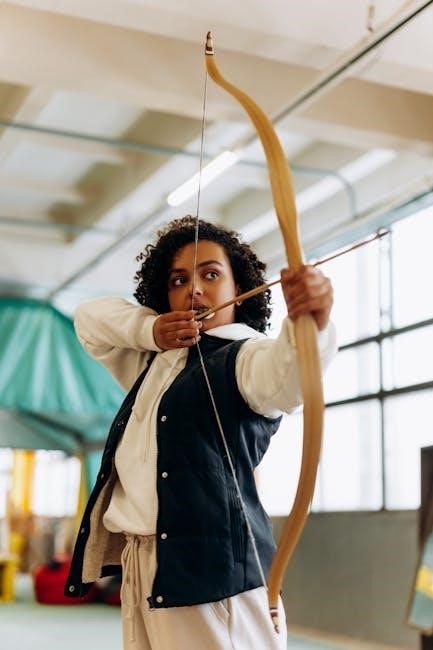
Leveling Up and Progression
Fighters gain powerful features like Second Wind and Action Surge early on, with Martial Archetype defining their combat style. Progression enhances versatility and combat effectiveness.
9.1 Level 1-4: Early Game Considerations
At early levels, Fighters rely on their Fighting Style and starting equipment. Second Wind and Action Surge provide survivability and burst potential. Prioritize Strength or Dexterity for attack and damage. Constitution boosts health, ensuring durability. Choose feats or race features that complement your build. Focus on acquiring versatile weapons and armor. Play to your class strengths, controlling combat and protecting allies. These levels build the foundation for later power spikes, so optimize your choices wisely.
9.2 Level 5-10: Mid-Game Power Spikes
Levels 5-10 mark significant power increases for Fighters. At level 5, Extra Attack grants multiple attacks per turn, boosting damage output. Action Surge becomes more versatile, allowing rerolls or bonus actions; Martial Archetype features expand, offering unique abilities like maneuvers or spellcasting. Ability Score Improvement at levels 6 and 8 enhances core stats. Feats like Sharpshooter or Great Weapon Master refine builds. Survivability improves with better AC and hit points. These levels solidify a Fighter’s role as a combat powerhouse, making them indispensable to the party.
9.3 Level 11-20: Late Game Domination
Levels 11-20 transform Fighters into unstoppable forces. At level 11, Improved Critical increases critical hit chances, while Extra Attack grants a third attack. Martial Archetype features peak, with Eldritch Knights casting 5th-level spells and Battle Masters mastering superior maneuvers. Ability Score Improvements at 12, 16, and 19 refine stats, enhancing survivability and damage. By level 20, Fighters are battlefield commanders, combining unparalleled combat prowess with strategic versatility, making them indispensable in epic encounters.
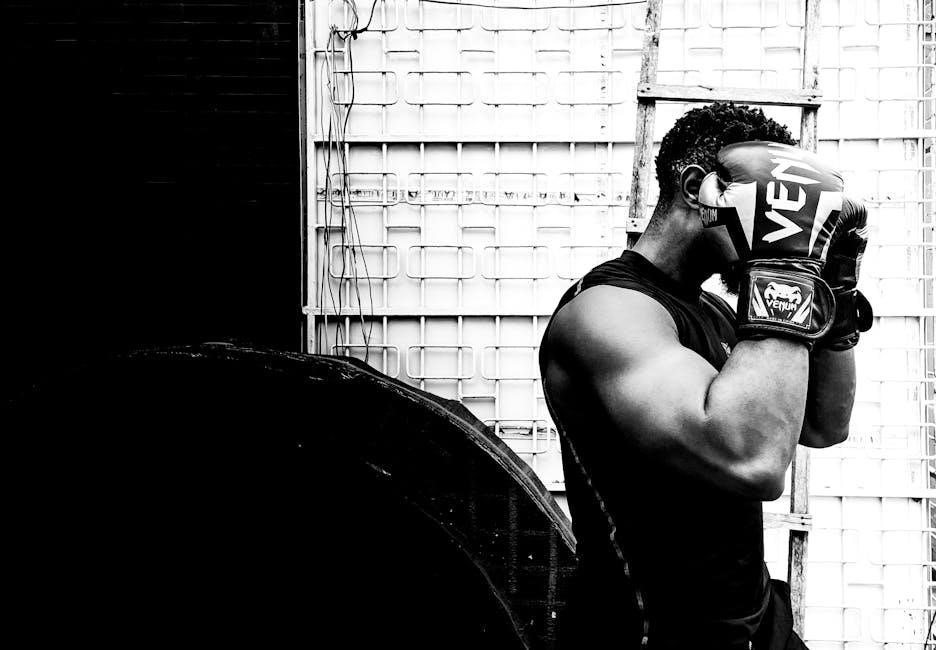
Frequently Asked Questions
10.1 Is Fighter a Good Class for Beginners?
Fighter is an excellent class for beginners due to its straightforward mechanics and versatility in combat, making it easy to learn and play effectively.
10.2 How to Multiclass Effectively
Choose multiclass options that complement the Fighter’s combat style, such as Rogue for sneak attacks or Wizard for spellcasting, to enhance versatility in battles.
10.3 Can Fighters Be Versatile?
Fighters are highly adaptable, with archetypes like Eldritch Knight or Battle Master offering unique playstyles, allowing them to excel in both melee and strategic roles.
The Fighter is an excellent class for beginners in D&D 5e due to its straightforward mechanics and versatility. With core features like Second Wind and Action Surge, new players can easily grasp the fundamentals of combat. Fighters also offer flexibility, allowing experimentation with different fighting styles and builds. Their durability and ability to adapt make them a great choice for learning the ropes without feeling overwhelmed by complex rules or resource management.
Multiclassing with Fighter can enhance versatility, but requires careful planning. Focus on classes that complement the Fighter’s strengths, like Rogue for Sneak Attack or Cleric for support. Avoid overlapping features to prevent redundancy. For example, pairing Fighter with Barbarian for rage can boost survivability, while Fighter with Wizard adds spellcasting. Balance combat effectiveness with new abilities, ensuring each level contributes meaningfully. Prioritize builds that amplify your desired playstyle without overcomplicating the character.
Fighters are highly adaptable, offering versatility through subclass archetypes and feats. The Eldritch Knight combines magic with martial prowess, while the Battle Master excels at controlling the battlefield. Champions are durable and versatile, making them fit for any role. Fighters can also multiclass effectively, blending their combat skills with other classes’ abilities. This adaptability allows Fighters to fill multiple roles in a party, making them a versatile choice for any playstyle or campaign setting.
